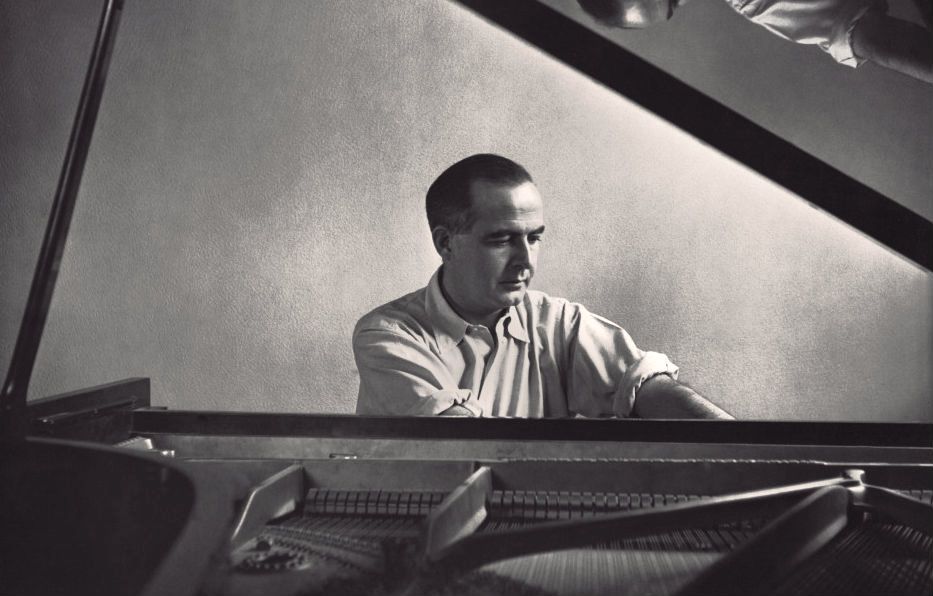Samuel Barber, an American composer known for his richly lyrical and emotional music, stands as one of the 20th century’s most significant composers. His works span a wide range of genres, including orchestral, vocal, and chamber music. Barber’s music, deeply expressive and often melancholic, draws from traditional Romanticism, but also embraces a modern sensibility. In this article, we explore five of his finest compositions that showcase his remarkable talent and lasting influence.
1. Adagio for Strings, Op. 11 (1936)
Perhaps Barber’s most iconic piece, Adagio for Strings is a work of profound emotional depth. Originally composed as the second movement of his String Quartet, Op. 11, it was later arranged for string orchestra. Its slow, aching melody builds to an intense climax, making it a powerful expression of sorrow and contemplation. Frequently performed at solemn occasions, including state funerals, this piece resonates deeply with listeners and is often considered one of the most beautiful and heart-wrenching pieces of classical music ever written.
2. Knoxville: Summer of 1915, Op. 24 (1947)
This orchestral song for soprano and orchestra is based on a prose text by James Agee, reflecting the idyllic and nostalgic childhood memories of summer in Knoxville, Tennessee. Barber’s setting of the text captures the gentle rhythms of speech and the peaceful atmosphere of a warm summer evening. The music ebbs and flows with a dreamlike quality, creating a serene and poignant atmosphere. It showcases Barber’s exceptional ability to blend text and music in a way that enhances both, making Knoxville one of his most beloved works for voice and orchestra.
3. Violin Concerto, Op. 14 (1939)
Barber’s Violin Concerto is one of the most performed violin concertos of the 20th century. Its first two movements are marked by lyrical, singing melodies that showcase the violin’s ability to express profound emotion. The final movement, in contrast, is a brilliant and fast-paced perpetual motion, filled with virtuosic demands on the soloist. This concerto is a testament to Barber’s melodic gift and his skill in blending lyricism with technical brilliance, creating a piece that is both emotionally rich and exciting to listen to.
4. Hermit Songs, Op. 29 (1953)
This song cycle, set to texts written by anonymous Irish monks and scholars between the 8th and 13th centuries, is one of Barber’s most intimate and spiritually evocative vocal works. The ten short songs capture a range of emotions, from humor to contemplation, and Barber’s sensitive settings highlight the simplicity and depth of the texts. Hermit Songs remains a favorite among singers and audiences alike, showcasing Barber’s masterful ability to write for the human voice with clarity and expression.
5. Piano Sonata, Op. 26 (1949)
Barber’s Piano Sonata is one of the few large-scale piano works he composed and stands as a significant contribution to 20th-century piano literature. Written for the renowned pianist Vladimir Horowitz, the sonata is complex, technically challenging, and filled with both explosive energy and quiet introspection. The final movement, a fast-paced fugue, demonstrates Barber’s mastery of counterpoint and formal structure while maintaining an emotional intensity throughout. It remains a cornerstone of the modern piano repertoire.
Conclusion
Samuel Barber’s music continues to captivate audiences with its emotional depth, lyrical beauty, and timeless appeal. From the sorrowful strains of Adagio for Strings to the intricate beauty of his Piano Sonata, these five compositions represent the very best of his artistic output. Each piece reveals a different facet of Barber’s genius, making him one of the most cherished composers of the 20th century.


Comments are closed